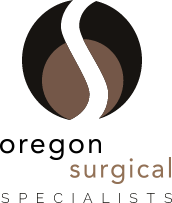PATIENT INFORMATION
Carotid Endarterectomy Surgery
Procedure Instructions
Carotid endarterectomy is performed in the operating room while you are asleep under general anesthesia.
Before Surgery
- Tell your doctor about all medications you are taking, including vitamins, supplements, and blood thinners.
- Do not eat or drink anything after midnight the night before your surgery.
- Make sure that you have someone to give you a ride home from the hospital.
During Surgery
- An incision is made in the neck to expose the carotid artery.
- The surgeon clamps the carotid on both sides of the plaque deposit to prevent bleeding. Vessels from the other side of the body take over to supply the brain with blood during the operation.
- The surgeon opens the vessel and pulls out the plaque.
- In most cases, a sterile patch is sewn to each edge of the artery to help keep the artery open and prevent plaque from forming again.
- The surgeon closes the artery. Once all bleeding is controlled, the muscles and tissues in the neck are sewn together and the skin is closed.
- You will wake up in the recovery room where you will be closely monitored until you have recovered sufficiently to be taken to your hospital room.
- You may be discharged the next day or several days later, depending on the speed of your recovery.
Risks and Possible Complications of Surgery
- Infection
- Bleeding
- Blood clots
- Risks from anesthesia
- Pain at the incision site
- Temporary facial numbness due to nerve damage from the incision
- Stroke
- Heart attack
Caring for Yourself after Surgery
Pain is common after surgery, especially around the incision site. The pain medication prescribed by your doctor will help with this pain, which should improve in the days following your surgery.
Fever: A low-grade temperature is common after surgery. If your temperature exceeds 101.5 degrees, or if it is accompanied by chills, vomiting, or flu-like symptoms, call the office.
Bathing: Your incision will be covered with a bandage called a “steri-strips.” It is O.K. to take a shower the day after your surgery and you may get the steri-strips wet, but do not soap them. Do not soak in the bathtub or get into pools or hot tubs for 4 to 6 weeks following your surgery to prevent infection.
Incision: After surgery, a sterile bandage called a steri-strip will cover your incision. While you are in the hospital, the nursing staff watches closely to make sure that there is no swelling under the incision before you go home. Occasionally, fluid can build up under the incision after you leave the hospital. This is not dangerous unless it causes you to have difficulty speaking, swallowing, or breathing. Your body will reabsorb it over time. There may also be some watery pink drainage from the incisions; this is normal. Signs of an infection include thick green or yellow drainage, or skin around the incision that is red or warm to touch. Please call the office if this persists. Some swelling and bruising around the incision is normal and should improve in the days following your surgery.
Headaches: Headaches are common after carotid surgery. However, headaches can also be a sign of increased blood pressure, which can be dangerous in the days following your procedure. If you develop a headache that feels more intense than your usual headaches, has a sharp or stabbing quality, or is not relieved by pain medication, please call the office. If you develop a headache along with any signs or symptoms of a stroke, such as slurred speech, weakness or paralysis of one side, altered mental status, or visual disturbances, you should get to the emergency room.
Seizures: Very rarely, a seizure can occur up to a week after the carotid surgery. If you think you have had a seizure, a friend or family member should call 911 immediately.
Constipation: Constipation is very common following a surgery. The anesthetic used during the operation slows bowel function, which can lead to constipation for up to a week. Pain medications such as Vicodin or Percocet also cause the bowel to move more slowly. You may try over-the-counter medications such as milk of magnesia, Colace, or Metamucil, as well as prune or apple juice to get your bowels moving.
Driving: We want you to be safe on the road, so you must be off of narcotic pain medications such as Vicodin or Percocet when you drive. It is also illegal to drive when you are on prescription pain medications.
When to Call the Doctor
- Fever over 101.5 degrees.
- Persistent, increasing pain.
- Increased redness or drainage from an incision.
- Pain or swelling in your calf.
- Difficulty breathing.
When to Go the Emergency Room
- Uncontrolled bleeding from the incision.
- Persistent vomiting.
- Change in mental status.
- Inability to breathe.
You are always welcome to call the office with your questions or concerns. After hours, an answering service will direct your questions to the on-call providers. However, these individuals are unable to call in prescriptions for pain medication after 5 p.m.
